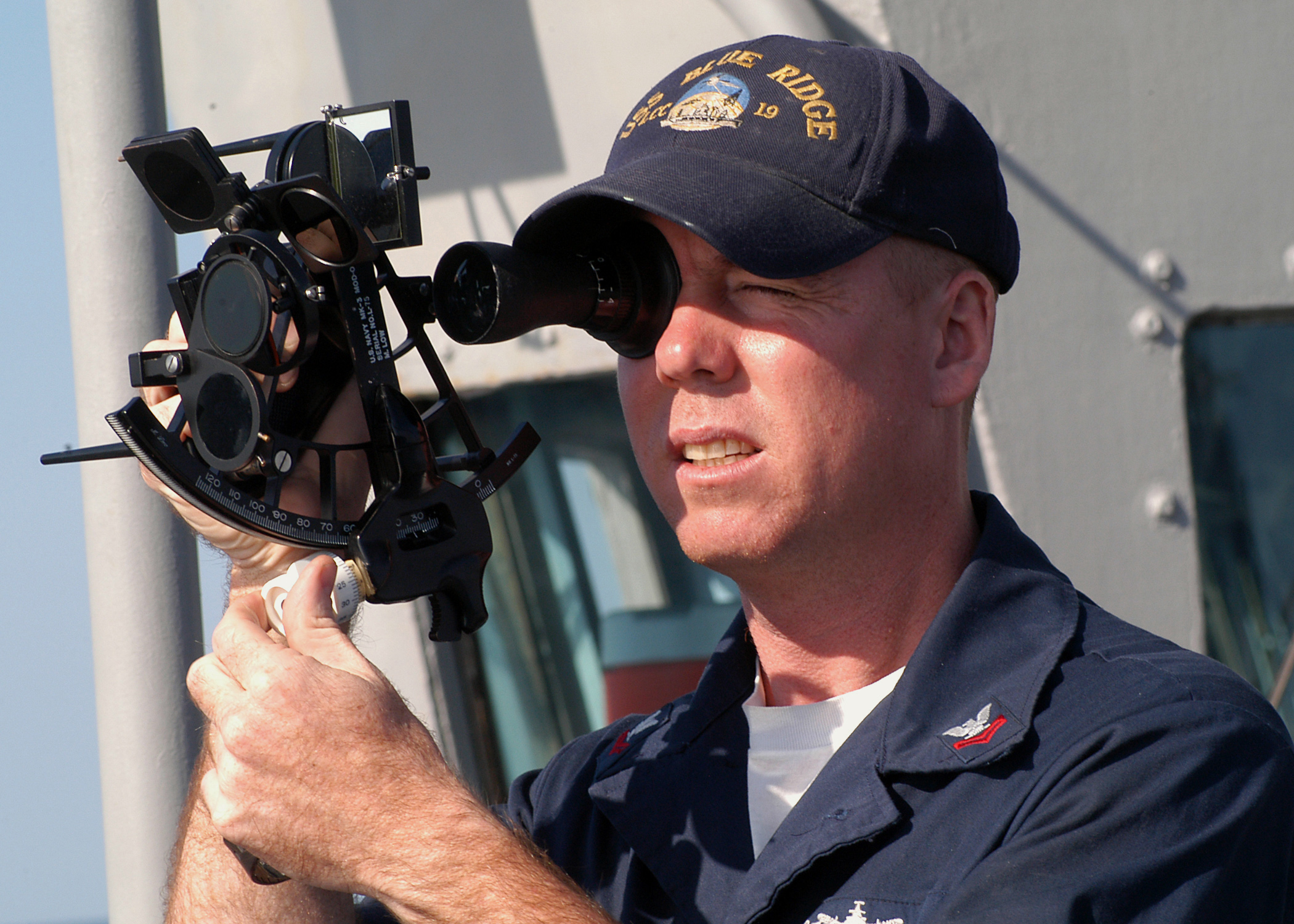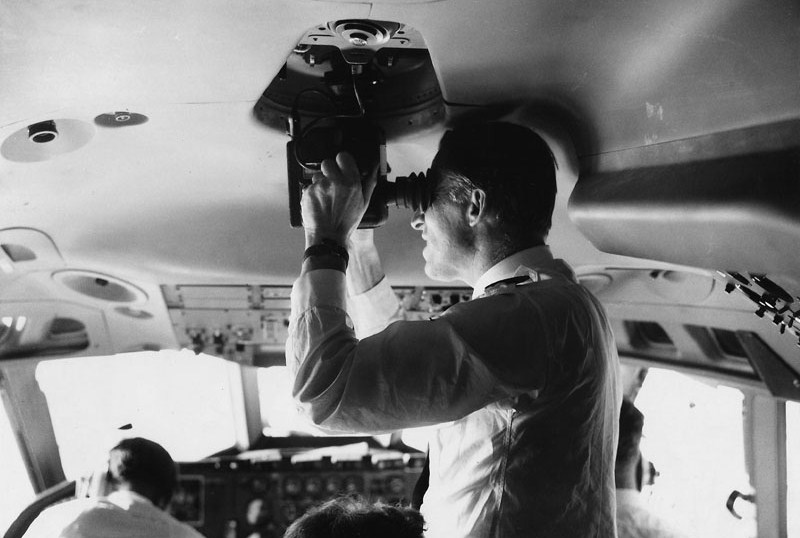Okay, here's what I've got so far. This is a very rough draft, and I know it's over the top, but here are pilot Frank Cobb and the old sextant-guy, Salty, recounting their adventure at a breakfast:
“It happened over the midwest. We had a radar contact on our six, less than one hundred feet back.” Salty held his hands three feet apart.
“Right,” said Cobb. “We’re going Mach 3.5. There’s no way a normal aircraft could occupy that position. I switch on the rear-view camera, and sure enough, it’s the sphere. I slow down to subsonic, and try some evasive maneuvers, but I can’t shake it. It’s as if it’s connected to the Peregrine by a rigid rod.”
“Then it just disappears.” Salty snapped is fingers, and made like he was looking around for something. “Not flies away, not stops and lets us fly away, it just disappears from the radar. The camera shows it hasn’t moved. Then it comes closer and closer. I say ‘Ah, Frank,’ and it’s just off the horizontal stabilizer. My neck isn’t what it used to be, folks, and it was hard to turn enough to see it, but it was there. Almost touching us. Now, are you guys ready for the piece of resistance?” Salty took a big bite of sausage.
Major Cobb sat back and smiled, knowing what was coming.
Salty finished his bite, and swallowed. “Damned if that sphere didn’t move right over my head, and, I’m not making this up, it starts tapping on the canopy. Tap, tap, tap. Just like that.” Salty mimed straining to look straight up, and tapped his fork on his forehead.
Cobb took over the narrative. “I’m subsonic now, but the sphere is just totally messing with the aerodynamics. I’d figure out how to compensate for this thing, or, I should say that the computer would figure it out, and then it would move. It’s like we had this huge beach ball glued to the plane. Alarms sounding all over the place.”
“So far,” said Salty, “everything was nice, nice. Just a little friendly ‘Hello there, Earthlings, isn’t this fun” tapping. But then—”
Cobb slapped the table. “Then all hell breaks loose. The electronics go out for about one second, and I find out how well this plane flies without the computer.”
“And the answer is …” Salty made a wrong-answer-buzzer sound. “It doesn’t.”
“Right, we had a flameout and I had no control over the plane. We start descending. The manual says ‘Do not delay ejection if the aircraft is in an uncontrolled condition,’ and I tell Salty to get ready to eject. But I’ve got to hand it to the programmers, the engines restarted like clockwork, and we were soon straight and level. I didn’t do a thing. I’m going to kiss those guys if I ever find them.”
“But we weren’t out of the woods yet,” said Salty. “Our little adventure kind of shook things loose.”
“Right.” Cobb nodded. “We had about five systems down, and the most important one was the inertial guidance. According to that, we were somewhere over South America.”




